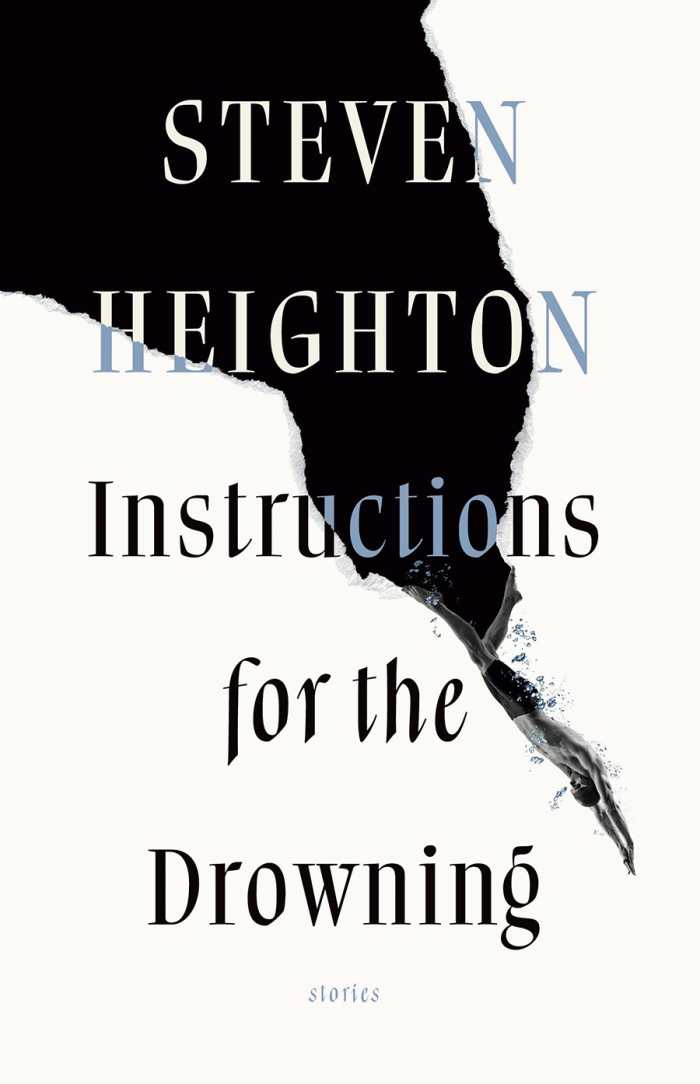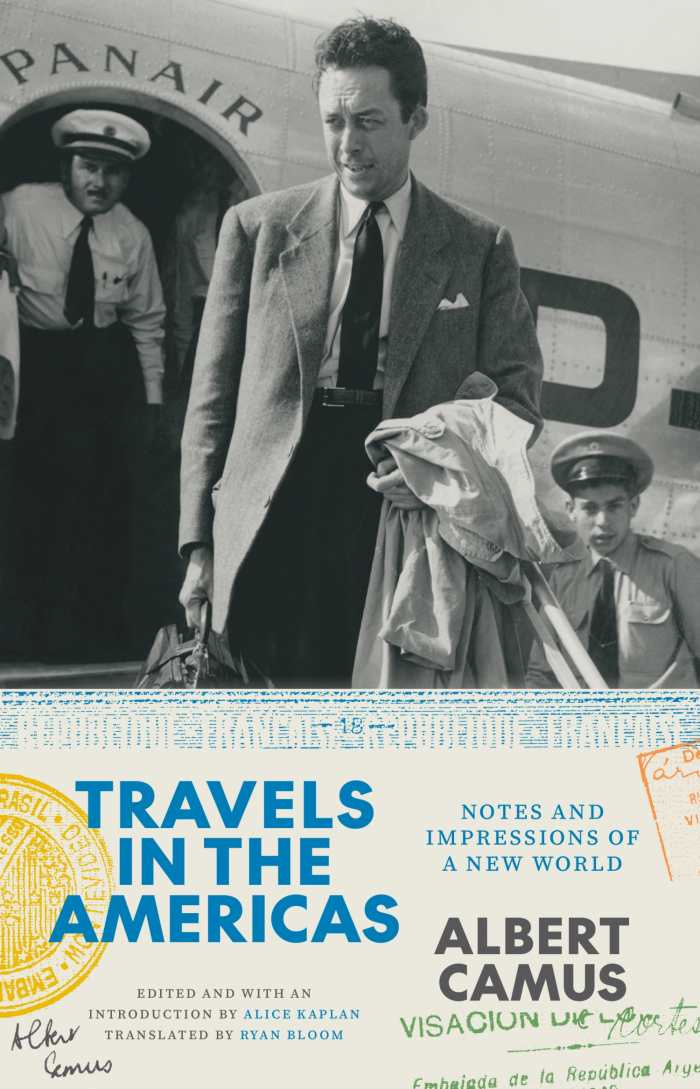Book of the Day Roundup: April 3-7, 2023
The Sky above the Roof

Nathacha Appanah
Geoffrey Strachan, translator
Graywolf Press
Softcover $15.00 (144pp)
978-1-64445-225-7
Buy: Local Bookstore (Bookshop)
In Nathacha Appanah’s luminous novel The Sky above the Roof, a teenager’s impulsive, confused actions lead to his imprisonment.
Formidable, intense Phoenix was forced to be a child entertainer. Doll-like, she sang for adoring audiences with her hair curled and her small face rouged and lipsticked. Following a traumatic incident, Phoenix rebelled, exhibiting increasing violence. She left home soon after, covering her body with tattoos, starting an auto parts business, and raising two children as a single mother.
Wolf is Phoenix’s seventeen-year-old son; he was so named to reflect Phoenix’s hopes that he’d be fierce and brave. Instead, he acts more like an anxious chameleon: he still looks like a child; he endures panic attacks and observes the world with “big, sad eyes.” Wolf and his older sister, Paloma, share a unique, close relationship, until troubles with their mother prompt Paloma to find her own apartment.
After his sister moves away, Wolf is frantic and alone. He steals his mother’s car to visit Paloma and is arrested for reckless endangerment and driving without a license. In the detention center, a numbing “survival instinct” tells Wolf to “forget his heart” and accept the confines of his cell. He is given a toothbrush and other essential items, along with a booklet, I Am in Prison. Forming a reluctant alliance, Paloma and Phoenix struggle to save Wolf from the void of the juvenile justice system.
Taut and impressionistic, the novel offers a quiet advisory regarding the treatment of youthful offenders. While Wolf’s crime isn’t violent or premeditated, he is sent to jail; there, his mental and physical vulnerabilities seem even more unnerving and his future becomes precarious.
The Sky above the Roof is a haunting story about family disconnect and dysfunction; its intriguing heroes walk a gradual path toward healing, empathy, and emergence.
MEG NOLA (February 27, 2023)
The Invitation

Stacey May Fowles
Marie Lafrance, illustrator
Groundwood Books
Hardcover $19.99 (40pp)
978-1-77306-661-5
Buy: Local Bookstore (Bookshop)
Fern, an anthropomorphized plant, gets an invitation to a surprise exhibition at the local museum, but her anxiety almost prevents her from going. Her friend Fawn, a deer, arrives just in time, encouraging her to go and offering to accompany her. The colored pencil illustrations are a whimsical delight as they follow Fern and Fawn through the woods, with Fawn gently dismantling Fern’s catastrophizing. The clouds that hang over Fern and others, representing their anxiety, are a poignant touch—especially as they fade away.
DANIELLE BALLANTYNE (February 27, 2023)
Lewis Sinclair and the Gentlemen Cowboys

D. M. S. Fick
CamCat Books
Hardcover $26.95 (288pp)
978-0-7443-0881-5
Buy: Local Bookstore (Bookshop)
In D. M. S. Fick’s cozy mystery novel Lewis Sinclair and the Gentlemen Cowboys, a country music festival is the stage for an unsettling murder.
Lewis is a hardworking country musician who’s striving toward his band’s big break. Fate turns in their favor with an offer to play at the nation’s largest country music festival. The day before he’s due to perform, though, the love of Lewis’s life, who’s also weaseled her way into the festival, leaves him. It seems she was using him for his industry connections; now, she no longer needs sweet Lewis by her side.
The festival grounds feature a walk of fame with cement hand prints celebrating some of its most iconic performers. Lewis’s boorish manager is made the newest addition to this display: he’s found dead, with his head buried in the cement. After their altercation the day before, Lewis is the prime suspect. He enlists the help of his band mates and the loyal festival staff to find the real killer before someone else is murdered or Lewis takes the blame.
The book’s heroes are Lewis and his band mates; they’re depicted in a warm, inviting fashion, with their endearing traits highlighted. There are indications that some of them may capable of murder, too, but few had the motivations or opportunity to take their manager out. They secure audience investment—and hope in their innocence. A secondary story line concerning a missing brooch results in some surprises; it also leads into the book’s powerful ending.
Lewis Sinclair and the Gentlemen Cowboys is a charming mystery novel in which lovable musicians and a country festival staff race to solve a murder.
JOHN M. MURRAY (February 27, 2023)
Instructions for the Drowning

Steven Heighton
Biblioasis
Softcover $16.95 (224pp)
978-1-77196-535-4
Buy: Local Bookstore (Bookshop)
In Steven Heighton’s masterful posthumously published story collection Instructions for the Drowning, men’s psyches are on display.
These layered and intricate stories balloon out their denouéments until they are taut. “Instructions for Drowning” focuses on the excruciating moment in which a man tries to rescue his drowning wife. In “Repeat to Failure,” a man ruminates about the freakishness of death as he gasps beneath a fallen weight bar in the gym. And in “You’re Going to Live,” a prison officer walks a fine line between duty and hate as he stops a prisoner from gagging himself.
Suicide is a dominant theme. In “Notes Towards A Theory of Tears,” a doctor suffers second-hand PTSD from treating Canadian soldiers who were sent to Afghanistan; he attempts multiple suicides. Underlying menace creeps within an aged, privileged plastic surgeon’s mind in “Professions of Love” as he remakes his wife’s face without her permission. And in “Everything Turns Away,” a man test-driving a car happens upon a suicide and attends to the unknown man’s funeral; death creates intimacy with a stranger even as it estranges him from himself.
Often in these tales, ostensibly throwaway details illuminate people’s interior lives. There are luminous and compassionate reveals: of a gay man who’s dying of HIV and who refuses a lap blanket because he is not yet old; of a Muslim man on a Greek island whom no woman would marry because his hands have buried too many Syrian refugees.
The Joycean stories collected in Instructions for the Drowning are searing reminders: that the other side of rage is a vale of tears; and that people lie to themselves to avoid facing “the world naked,” not knowing how to save themselves, even when a helping hand is extended.
ELAINE CHIEW (February 27, 2023)
Travels in the Americas
Notes and Impressions of a New World

Albert Camus
Alice Kaplan, editor
Ryan Bloom, translator
The University of Chicago Press
Softcover $22.50 (144pp)
978-0-226-69495-5
Buy: Local Bookstore (Bookshop)
Travels in the Americas is Albert Camus’s lively, intimate travel record, covering his encounters abroad as well as his inner world with Gallic flair.
An astute observer of people and places and an avid participant in the life around him despite his bouts of illness, Camus crossed the Atlantic in March of 1946, even as his native France was celebrating its liberation from Nazi occupation. His goal was a three-month tour of the US and Canadian East Coasts. He planned lectures and meetings with members of the publishing world and literary society. A second crossing, in July of 1949, took Camus to Brazil, Chile, Argentina, and Uruguay, this time as an international literary celebrity and unwilling representative of the fashionable European existentialist movement.
In 1946, Camus was showing signs of what he suspected was more serious than just recurring bouts of the flu. He nevertheless worked to be a polite guest, making the appropriate appearances and enduring long hours and sleepless nights arranged by hosts who were eager to show him the glories of their countries. Exhausted and depressed, his piercing melancholy became most clear in Brazil, where, seeing the homes of the wealthy standing almost shoulder-to-shoulder with the cardboard and tin shanty towns of the poor, Camus wrote, “Never have luxury and misery seemed to me so insolently thrown together.” Yet his literary sketches also include dry, often sarcastic humor: of the cuisine in the Brazilian state of Bahia, he writes “We eat dishes spicy enough to cause miracles in paralytics.”
With its ample photographs, rich introduction, and smooth-flowing, conversational translation, Travels in the Americas is an engaging travel account that reintroduces Albert Camus as both a man and an existentialist icon moving through North and South America in the postwar years.
KRISTINE MORRIS (February 27, 2023)
Barbara Hodge
